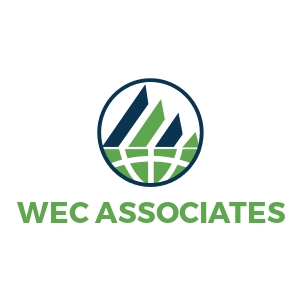COVID-19 Update
Emergency Grant
Immediate $10,000 (via SBA.GOV)
Short description:
- Fastest way to get financial assistance AND this does not have to be repaid (if used correctly).
- $10,000 must be used for specific broad purposes (payroll, mortgage/lease, other obligations)
- If using the Paycheck Protection Program (PPP), explained later, PPP loan forgiveness will be reduced by this $10,000 grant
- Directly deposited into your business account
- Available RIGHT NOW!
- Congress expanded access to the EIDL (Economic Injury Disaster Loan) program and created an Emergency Grant to allow a small business to apply for an IMMEDIATE ADVANCE of up to $10,000.
- This ADVANCE is for paying your any and all operating expenses (including payroll) AND
- YOU DO NOT HAVE TO REPAY THE $10,000EVEN IF YOUR REQUEST FOR AN EIDL LOAN IS DENIED
- Time of arrival of the funds: 3 days after the SBA receives your application
TIME NEEDED FOR THE APPLICATION: Plan for about 10 minutes to get through the application. However, expect waiting times and long processing times as the program has been overwhelmed with claimants
INFORMATION NEEDED FOR THE APPLICATION:
- Most Recent Business Tax Return (This will save you time since it contains quite a bit of the information you will need such as your business name, EIN (Employer Identification Number), date business opened, etc.
- Gross Revenue for last 12 months prior to the disaster
- Cost of Goods Sold for last 12 months prior to the disaster (If applicable)
o NOTE: You DO NOT have to submit or upload any documents for the information above, you only need to enter the figures from your financials and attest “under penalty of perjury” that they are true and correct.
- Business Bank Information to Direct Deposit the $10,000 Grant
- Bank Name
- Account Number
- Routing Number
The PPP (Payroll Protection Program) Loan via your lender
Short description:
- Short term loan to help you pay for 8 weeks of payroll, rent/mortgage and utilities that is faster to get then an EIDL and for a bonus, some of the PPP loan can be FORGIVEN.
- REMINDER: If you take the $10,000 immediate cash ADVANCE in under the Emergency Grant, the amount of the PPP loan that could be FORGIVEN will be reduced by the $10,000 grant advance.
- You will apply through lending institutions (a bank) and applications start:
Program began:
o Friday, April 3 for Small Business via EXISTING SBA lenders
o Friday, April 10 for Sole Proprietors and Independent Contractors
- Expect to get funds in 30 to 45 days from today (might be sooner but nothing definite yet)
- The intent of the PPP is to:
- Keep employees on payroll,
- Rehire employees you laid off, and
- Pay for specific expenses that keep the business doors open:
o Rent, Utilities, Mortgage interest (Note: Only the interest)
- The intent is key to how you will later apply for FORGIVENESS.
- WHAT LENDING INSTITUTIONS CAN YOU APPLY TO
o Any SBA (Small Business Administration) approved lenders
o Also, the SBA is trying to make it easy to add additional lenders as fast as possible in order to add on more approved lenders to handle the incredible volume of applications.
- APPLICATION PERIOD WITH A LENDING INSTITUTION
o February 15, 2020 to June 30, 2020 NOTE: This period has nothing to do with the eligible period to spend the funds.
o The eligible period to spend the funds is 8 weeks from the loan origination date.
o This period means you must apply for the funds before June 30, 2020 or you will be too late to apply
- DETAILS ON THE TERMS FOR ALL PPP (Payroll Protection Program) LOANS:
o 2-year Max Maturity (as of Tuesday evening, March 31, 2020)
o Max rate 0.5% rate (as of Tuesday evening, March 31, 2020)
o Fees are waived
o No collateral AND no personal guarantee
o No prepayment penalties
o Payments are DEFERRED for 6 months
- WHO QUALIFIES?
o Small Businesses with fewer than 500 employees
o Sole Proprietors & Independent Contractors
o Non-Profits (501-c3 only)
- WHO/WHAT COMPENSATION IN THE SMALL BUSINESS CAN BE PAID WITH THESE FUNDS?
o Employees (not exceeding $100,000)
o Independent Contractors, Sole Proprietors and Self-Employed Individuals, 1099 staff, Gig workers
- CLARIFICATION: At the time of this writing, it is not clear if each Independent Contractor must make their own PPP application or can they be included under an application of business that pays the Independent Contractor.
o As I understand the current process:
- 1099s with SSN –Employers can include in their application
- 1099s with EIN –Need to apply for their own PPP
- Please watch for more guidance on this distinction
- AMOUNT YOU CAN APPLY FOR
o If you are a business that has 500 or less employees, you will receive the LESSER OF:
- Calculate your AVERAGE MONTHLY PAYROLL costs for the 1-year period prior to the loan.
- Multiply that AVERAGE MONTHLY PAYROLL by 2.5
o Example:
- Average monthly payroll is 10,000 * 2.5 = $25,000 loan
Yes, there is my disclaimer:
Because this is a new program, there may be changes or updates to the requirements once the lending process begins. Advocates for the banking industry, including the Consumer Bankers Association and the Independent Community Bankers of America, already have voiced concerns that the individual banks that might issue PPP loans have not yet received enough guidance from the SBA.

